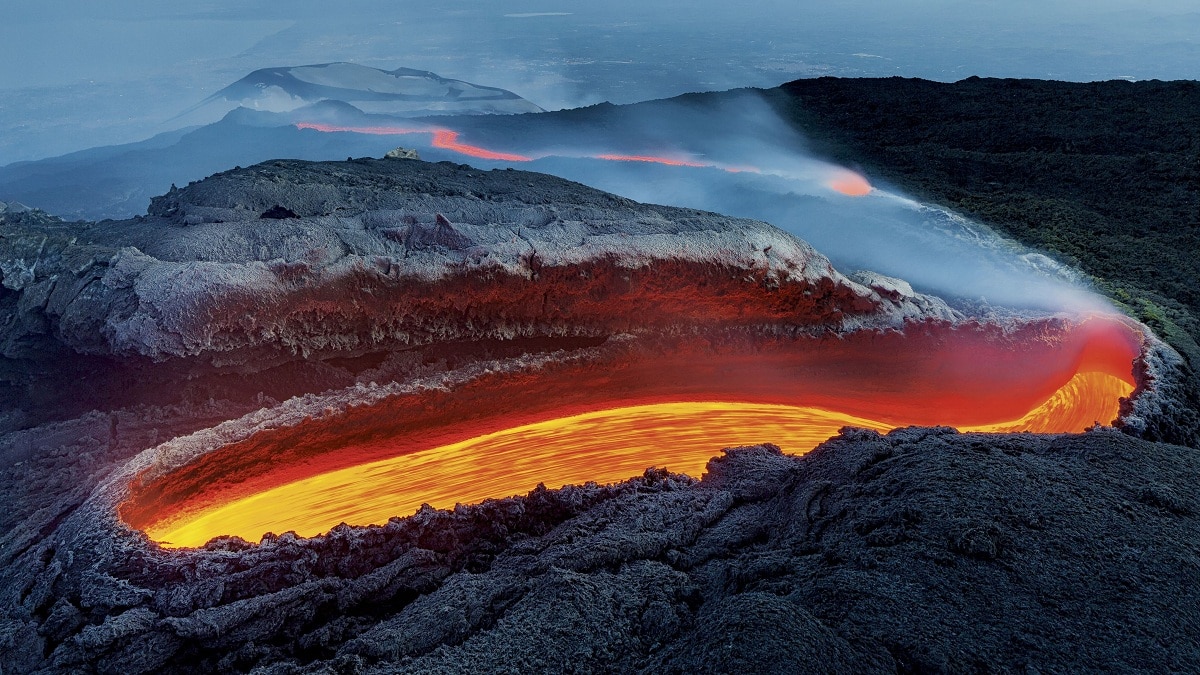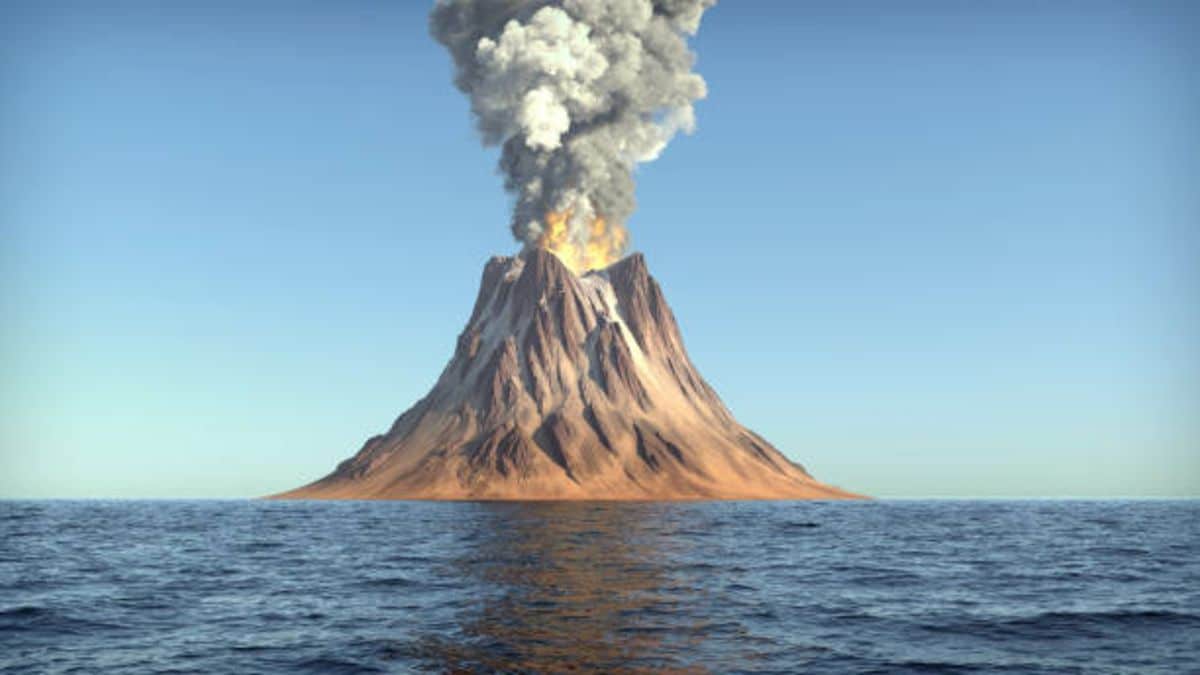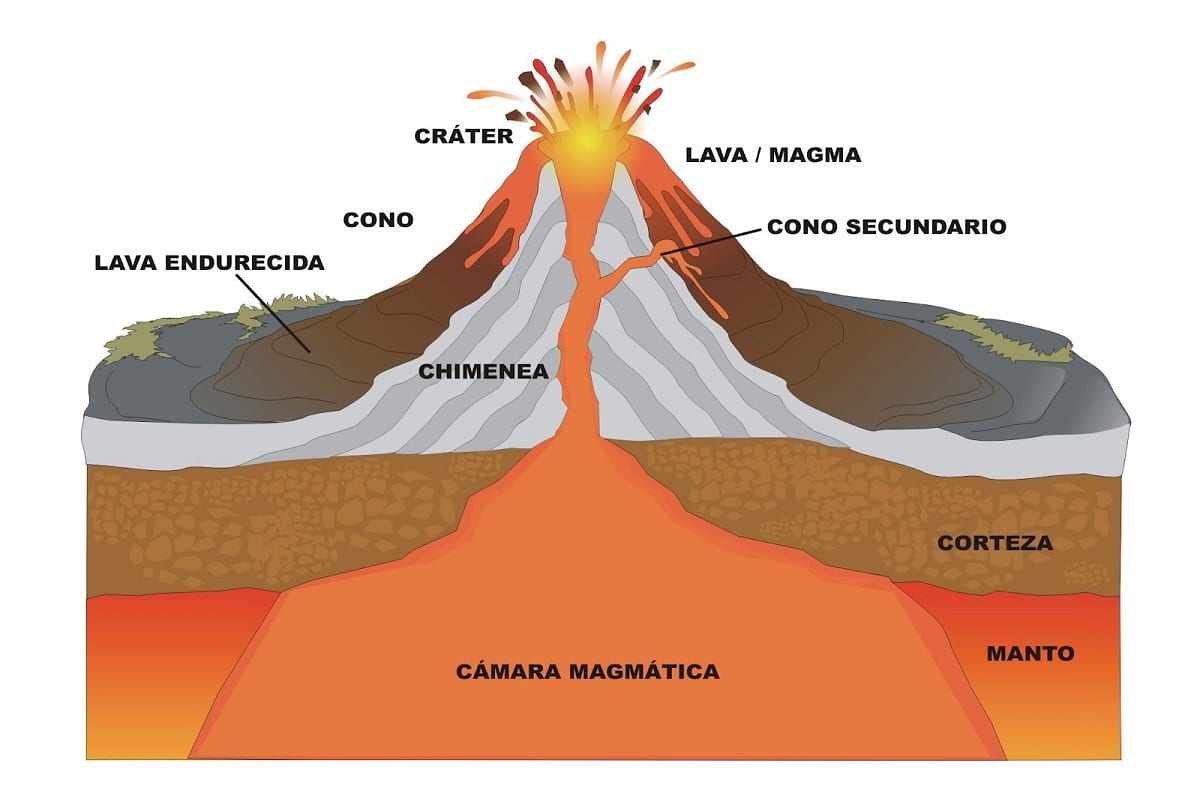
We know that volcanoes are geological structures that expel magma that comes from the interior of the earth. Magma is nothing more than a large mass of molten rock that comes from the Earth's mantle. When the magma reaches the surface it is called lava. There are numerous types of volcanoes according to their shape and the type of rash they have.
In this article we are going to tell you what are the different types of volcanoes that exist and what are their eruptions.
Types of volcanoes according to their activity

These are the main types of volcanoes according to their type of activity:
- Active volcano. They are those volcanoes that are inactive and can erupt at any time. This happens in most volcanoes, but as examples, we can cite the Cumbre Vieja volcano in La Palma, Spain (now erupting), the Etna volcano in Sicily, Italy (currently erupting) and the Fuego volcano in Guatemala ( currently erupting) and the Irazú volcano in Costa Rica.
- Inactive volcano. They are also called sleepers, and they are volcanoes that maintain minimal activity. Despite its low activity, it occasionally erupts. When there are no volcanic eruptions for centuries, the volcano is considered dormant. The Teide volcano in the Canary Islands of Spain and the Yellowstone super volcano in the United States are examples of dormant volcanoes. However, both examples have shown movement in recent years, there has been a mild earthquake in their area, indicating that they are still "alive" and may become active at some point, they are not extinct or displaced.
- Extinct volcano. They are the last volcano to erupt, dating back more than 25.000 years. In any case, the researchers do not rule out that they may reappear at some point. This method is also called a volcano whose tectonic movement is displaced from its magma source. The Diamond Head volcano in Hawaii is an example of an extinct volcano.
Types of volcanoes according to their eruptions

These are the different types of volcanoes that exist according to their eruptions:
- Hawaiian volcanoes. The lava from these volcanoes is fluid and does not release gas or cause an explosion during the eruption. Therefore, the volcanic eruption is silent. Most of Hawaii's volcanoes have these types of eruptions, hence the name. Specifically, we can mention the Hawaiian volcano called Mauna Loa.
- Strombolian volcano. Unlike the volcano just described, the Strombolian volcano exhibits a small amount of flowing viscous lava, with eruptions including continuous explosions. In fact, the lava crystallizes as it rises up the pipe, and then the volcanic activity slows down to launch semi-consolidated lava balls called volcanic projectiles. The name of this volcano refers to the Strombolian volcano in Italy, which rhythmically erupts every 10 minutes.
- Vulcan volcanoes. In this case, they are very violent eruptions that can destroy the volcano in which they are located. Lava is characterized by being very viscous and containing a lot of gas. For example, we can mention the Vulcan volcano in Italy, whose volcanic activity gave rise to this volcano.
- Plilian volcano. These volcanoes have very viscous lava, which quickly solidifies and forms a plug in the crater. The enormous pressure generated by the internal gas causes the transverse cracks to open, sometimes violently expelling the plug. For example, we can mention the Bailey Mountain volcano in Martinique, from which the name of this volcano is derived.
- Hydromagmatic volcano. Volcanic eruptions are caused by the interaction of magma and ground or surface waters. Depending on the magma / water ratio, a lot of steam can be released. This type of volcanic activity is common in the volcanoes of the Campo de Calatrava region in Spain.
- Icelandic volcano. In this type of volcano, the lava flows and the eruption is expelled by a crack in the ground, not by the crater. Thus was born the vast lava plateau. Most of these volcanoes are in Iceland, which is why they received their name. A specific example is the Krafla volcano in Iceland.
- Volcano submarine. Although surprising, there are also active volcanoes at the bottom of the ocean. Of course, ocean eruptions are usually short-lived. In some cases, the discharged lava can reach the surface and form volcanic islands as it cools.
Types of eruptions

Let's focus a little more on the type of eruption that each volcano has. It depends on the training and development context. Let's see what are the types of eruptions that exist:
- Hawaiian: The volcano emits slightly viscous lava, which is quite fluid because it does not have much pyroclastic material (a hot mixture of gas, ash, and rock fragments. The gas is released gradually, so the explosion is small.
- Strombolian: volcanoes release pyroclastic material. The explosions are sporadic and the volcano does not continue to emit lava.
- Vulcanian: The volcano emits very viscous lava with very little liquid and solidifies very quickly. A large cloud of pyroclastic material forms and a large amount of ash is emitted. They are characterized by eruptions in the form of clouds similar to mushrooms or fungi. Activities generally begin with a diving eruption that emits debris. The main scenario usually includes the eruption of viscous magma, which is rich in volcanic gas and forms dark clouds.
- Pliniana or Vesuviana: The volcano explodes lava very viscous and violently. It is characterized by its unusual intensity, continuous gaseous eruption and large ash discharge. Sometimes the eruption of magma causes the top of the volcano to collapse and create a crater. During the Prinia volcano eruption, fine ash can spread over large areas. The eruption of the Pliny volcano is named after the famous Roman naturalist Pliny the Elder, who died in the eruption of Mount Vesuvius in AD 79
- Brawler: This volcano is named after the eruption of the Pelee volcano in Martinique in 1902, which killed thousands of people. The lava quickly consolidated and created a plug in the crater. Since there is no outlet for the gas, a lot of pressure will be generated inside the volcano, so the wall of the volcano begins to deform and the lava is discharged from both sides of the wall.
- Hydro-volcanic: They are eruptions produced by the interaction of magma with groundwater or surface waters. They are “liquid: equivalent to strombolian eruptions, although they are more explosive.
I hope that with this information you can learn more about the different types of volcanoes and their eruptions.